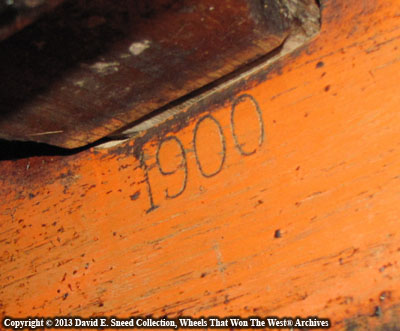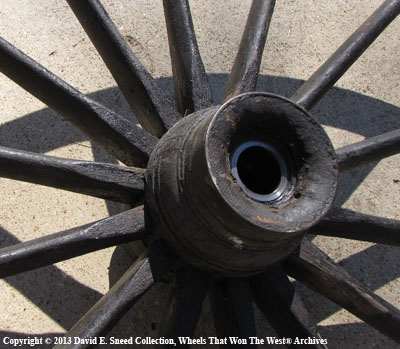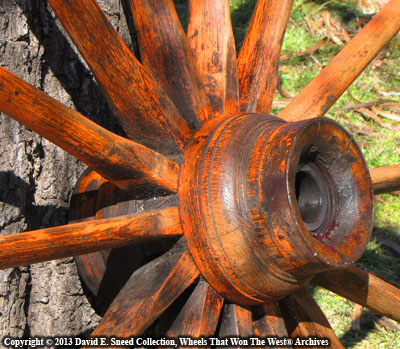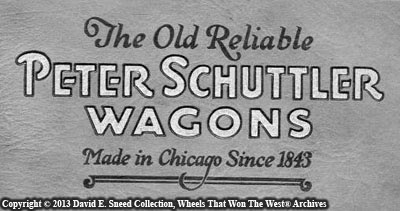As part of those efforts, our Wheels That Won The West® Archives are also privy to our vehicle, sign, and seat collection. These survivors lived much of their days outside and hearken to a time when wheels were wood, tires were steel and horseflesh ruled the road. Consisting of brands like T.G. Mandt, Weber, Studebaker, Schuttler, American, Springfield, Owensboro, Gestring, Florence, Birdsell, Bain, Weber & Damme, John Deere, Nissen, Cooper, Newton, Overland, Carver, Charter Oak, Winona, Pekin, Milburn, Moline, and others, this part of the collection is equally important when it comes to assistance with identification and authentication efforts.
As part of our research, Peter Schuttler vehicles and background materials have long been of particular interest to me. So much so that documenting early pieces from this maker has become a priority. Recently, we were fortunate to locate another century-plus-old Schuttler. This high wheel wagon includes its original manufacturer impressions dating it to the year 1900. While it has been well used, it was apparently well taken care of too; at least until a few years ago, when it seems someone attempted to cover the wagon with numerous layers of thick and dirty linseed oil. The result transformed the surface of the entire gear into a depressingly dark and rock-hard, black coating. At our core, we are preservers of history so we took a chance to see if we might help this aging piece to once again show its original colors, patina and finish.

Once we had the wagon on site, I made a closer examination and the extent of the treatment was unbelievable. This wasn't just a tough, dense and heavy caked-on finish that clung to the gear, it appeared to be multiple concentrations of encrusted tar or perhaps even deposits of creosote. The solid coating was applied directly over the existing grease, dirt, manure, grain, sand, paint, hair, seeds, and feathers (yes, feathers!!) that were stuck to the wheels and undercarriage.
I've seen similar situations of darkened gears before, but never anything to this extreme. So imposing was the covering and texture that any attempts to remove this "treatment" seemed likely to destroy possible surviving paint underneath. Nevertheless, over the years, we've experimented with numerous techniques to improve the presentation of original wagon paint. In the process, we've been able to develop several multi-stage approaches to vehicle conservation and cleaning that can prove beneficial to many of the most discouraging situations. I had no idea if we could help bring this gear back to life but, we were compelled to give it our best efforts. Surprisingly, section by section, the tragic coating is coming off. It is a methodical process, but the results are certainly cause for celebration! When we started, there was a solid gear with a black tar-like covering that made it impossible for the vehicle to be properly evaluated or appreciate in resale value. Now, the original orange Schuttler paint, crisp, well-defined wood contours, and even faded elements of the vehicle's early striping patterns are emerging. Its visual presence is certainly much more engaging.


The photos above show the before-and-after look of one of the 52" rear wheels. While there are still details to finish on this wheel and the rest of the gear, it's easy to see the difference. What a transformation! The reversal of so much over-treatment to the surface means this piece will soon be able to be showcased as a rare, turn-of-the-century high wheel Schuttler in exceptional condition. Its ultra-narrow 1 ½" tire, through-bolted construction, near full circle iron, and wider 60-inch track all add to its legacy as a unique and noteworthy example of early wagon design. As time allows, we'll try to share even more progress by occasionally highlighting the work involved in bringing back the surviving finish of this Chicago-made legend on wheels.
In the meantime, if you have any questions or wouldlike to see us cover a particular topic within this blog, feel free to drop usan email at info@wheelsthatwonthewest.com
